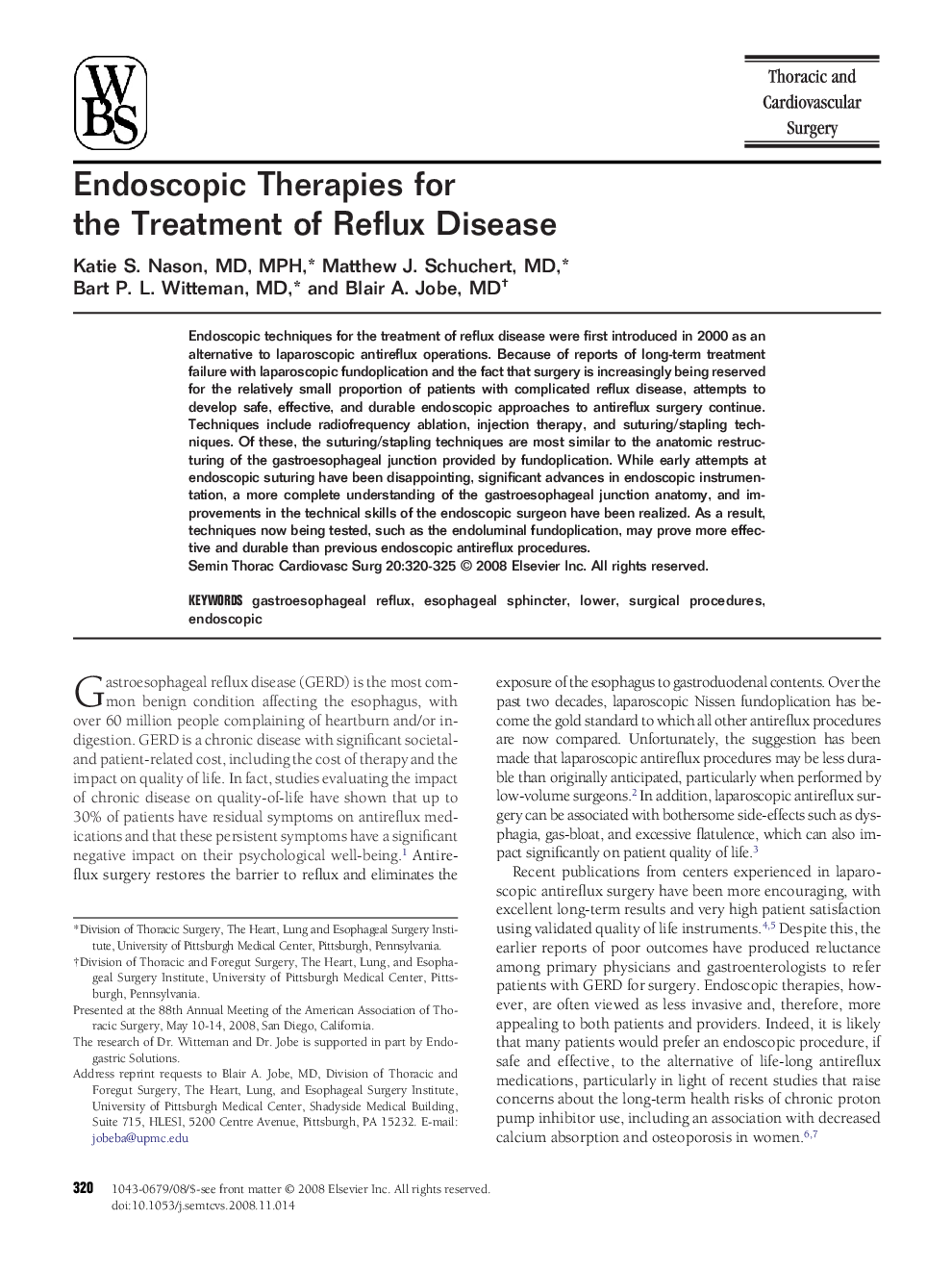| Article ID | Journal | Published Year | Pages | File Type |
|---|---|---|---|---|
| 3025576 | Seminars in Thoracic and Cardiovascular Surgery | 2008 | 6 Pages |
Endoscopic techniques for the treatment of reflux disease were first introduced in 2000 as an alternative to laparoscopic antireflux operations. Because of reports of long-term treatment failure with laparoscopic fundoplication and the fact that surgery is increasingly being reserved for the relatively small proportion of patients with complicated reflux disease, attempts to develop safe, effective, and durable endoscopic approaches to antireflux surgery continue. Techniques include radiofrequency ablation, injection therapy, and suturing/stapling techniques. Of these, the suturing/stapling techniques are most similar to the anatomic restructuring of the gastroesophageal junction provided by fundoplication. While early attempts at endoscopic suturing have been disappointing, significant advances in endoscopic instrumentation, a more complete understanding of the gastroesophageal junction anatomy, and improvements in the technical skills of the endoscopic surgeon have been realized. As a result, techniques now being tested, such as the endoluminal fundoplication, may prove more effective and durable than previous endoscopic antireflux procedures.
